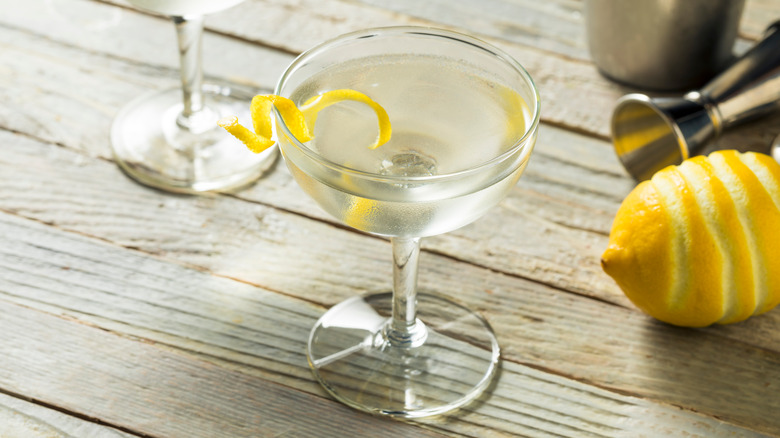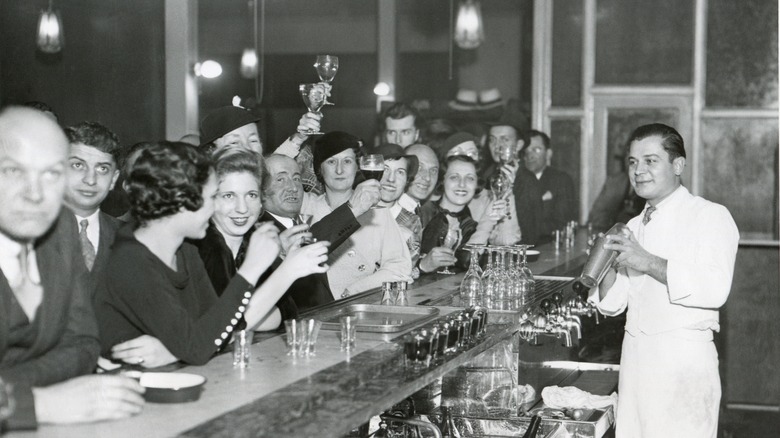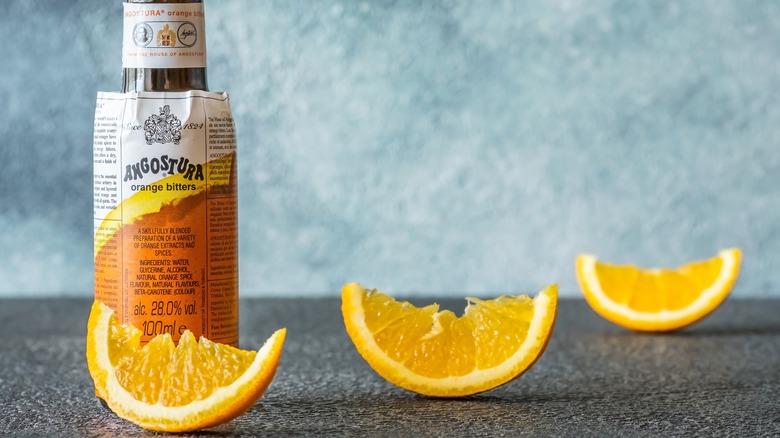Upgrade Your Martini With A Throwback To The Original Recipe
Making a martini isn't complex — at its heart, this cocktail has only two ingredients (gin or vodka and dry vermouth). However, its history and the debates on how it should be prepared, on the other hand, are very complex. While the martini's origins are somewhat hazy, by the turn of the 20th century, it became a popular drink. The cocktail has continued to evolve, moving steadily away from its origins and becoming drier (i.e. less vermouth) with each passing decade.
Today, there are hundreds of iterations of this classic drink, but if you want an easy upgrade to your martini, you actually should look to the past. We need to turn back the clock to the classic version of this cocktail from around 1930 to 1950 before anyone had even conceived of the idea of a chocolate version of this drink. It's a simple but delicious recipe that has 2.5 parts gin to 1 part dry vermouth, a dash of orange bitters, and a lemon twist to finish it off.
A throwback martini that can't be beat
Former NoMad Hotel bartender Matt Seigel makes his martinis using gin, "a good amount of vermouth," and the aforementioned orange bitters. Dry vermouth, a fortified wine that includes botanicals that pair well with the spirit, was once on a nearly equal footing with gin in this cocktail, but the proportion of vermouth kept getting smaller and smaller. Some customers will even request their bartender just simply swirl a few drops of vermouth in the glass and then pour it out for their extra dry martinis.
Seigel's version calls for the additional dash of orange bitters (which he calls "the classic way to do it"). It's added to a base that's made up of 1 ounce of dry vermouth to 2.5 ounces of gin, which is then stirred in a frozen mixing glass full of ice. He serves this martini in a coupe with a lemon twist. Besides being delicious, upgrading your martini to this classic version the next time you're out at a bar or restaurant has the bonus of preventing you from making a cocktail ordering mistake that might confuse the bartender.
The advantage of orange bitters in a martini
Some may argue that the bitters tamp down or mask the flavors in the gin, but there's a case for adding orange bitters to a gin martini besides historical accuracy since it was once a common ingredient. Orange bitters can bring out the citrus notes hidden in the gin and vermouth, brightening up the cocktail and helping to tie the overall flavor profile together.
The debate on what constitutes the highest example of a martini will likely continue well into the future. Just ask 007. The infighting concerning whether James Bond's signature martini order is wrong continues unabated. The British secret agent's preferred version uses vodka instead of gin and, more importantly, is shaken rather than stirred, which many believe bruises the alcohol resulting in a cloudy and watered down cocktail. In the end, it's all about personal preferences, but we recommend giving this classic version of the martini a try.


